Once upon a time back in the misty past of the early 1980s, a geeky 19-y.o. pushed BCGs up his nose, hoisted a green duffel over his green polyester leisure suit with its one lonely ribbon, and got onto Flight 007 to head for the Republic of Korea via Japan.
We didn’t yet know how close we were to the end of that chilly interregnum known as the Cold War. My flight number was 007, which raised my eyebrows just a little – and not because of James Bond. James Bond’s elegant dinner jackets were fading, soon to give way to Steven Seagal’s greasy little ponytail in as disappointing a cultural corruption as disco displacing rock.
The odd tingle in my guts as we cleared Anchorage for Tokyo had more to do with Soviet interceptor pilots than with British fantasies of steering the world. Two weeks earlier, the “Rooskies” had shot down KAL 007, killing 269 civilians. The Soviets claimed that the 747 was a spy plane. Whether or not a 19 year-old private agreed or understood the big picture, the Cold War was still very much on.
I knew nothing about the Korean War that hadn’t been on M.A.S.H. reruns, which is to say I basically expected to see Dodge ambulances manufactured in the 1940s — and I would, only they were ROKA rigs driven (and exactingly maintained) by Korean soldiers. They also kept in their inventory seemingly every M48 Patton tank that hadn’t been set permanently in front of a stateside post museum, kicked down to the National Guard, or left rusting in a Vietnam jungle.
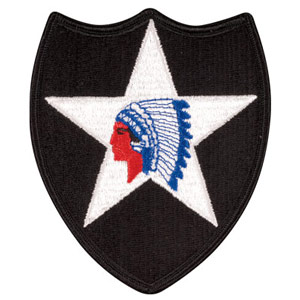 Descending from my short hop out of Tokyo, I learned my first two facts about Korea: it was composed of an endless series of dark, green hills, and Kimpo International Airport was surrounded by concentric rings of tank traps, anti-aircraft batteries, and policemen wearing navy blue uniforms, black patent leather brims, white belts and gloves, submachine guns, and serious expressions. Thirty years ago, the “war face” wasn’t reserved for Panmunjom.
Descending from my short hop out of Tokyo, I learned my first two facts about Korea: it was composed of an endless series of dark, green hills, and Kimpo International Airport was surrounded by concentric rings of tank traps, anti-aircraft batteries, and policemen wearing navy blue uniforms, black patent leather brims, white belts and gloves, submachine guns, and serious expressions. Thirty years ago, the “war face” wasn’t reserved for Panmunjom.
As we stepped off the plane onto rollaway steps, the city hit me with a stench like a Mexican slaughterhouse. The old cook next to me (younger than I am now) laughed at my wrinkled-up nose.
“Just wait,” he said, “until you get out by the rice paddies.”
Eighth Army’s Turtle Farm featured a brief language lesson with all the basics except the crucial intel of how to order a beer and negotiate down the price of an overnight late in the evening; a filmstrip show of the world’s most putrescent VD pictures (if it were today, I’d swear they were both Photoshopped AND three-D; they practically oozed off the screen); a pro forma counter-propaganda indoctrination; and a rundown of the Status Of Forces Agreement (SOFA), the treaty arrangement whereby if you ran down a chicken with a five-ton, you basically had indentured the good people of the U.S.A. to generations of chicken replacement. They also told us not to try to get married. The reasoning seemed sound to me.
The first place they sent me was to Camp Pelham, sitting on my duffel in the back of a quarter-ton M151A1 (just think of it as a “jeep;” it’s easier than explaining) for what felt like nine or 10 jouncing hours. Home of 2/17 Field Artillery, Pelham was a Western Corridor speed bump, just shy of the DMZ… stink bait for the North Koreans. The kid (weren’t we all?) who cut my orders from the Turtle Farm clucked and shook his head as he handed them across his desk.
“Where’s this?”
“Second I.D., man. Way up north. That’s hard living.”
He didn’t look like he knew much about hard living, and I exulted silently. Real soldiering! I’d have stories to tell when I got home.
When I reported to the orderly room of Second of the Seventeenth, the clerk yelled back at his ops NCO. “Hey! We got a Seventeen Charlie here to sign in!”
“We got a what?”
“A Seventeen Charlie!”
“What the hell is a Seventeen Charlie?”
The clerk looked at me, eyebrows raised. “Sound and flash target acquisition, um… Specialist.” I was still locked up and quivering at parade rest.
“At ease, at ease,” he said impatiently. “Just go wait in the E.M. club. I’ll come get you when we find you a room.”
The girl grinding mechanically on the club stage – I say “girl,” but she was likely older than me – was the first Korean stripper I saw, and practically the last. The ville at Song-Sa Nee was renowned less for staged entertainment than for direct, cash-fueled servicing of a gentleman’s requirements. Or a private’s.
I spent one night at Camp Pelham, sleeping fitfully on the cot of somebody who was out in the field and had neglected to take along his enviable porn collection (already I was learning things), and caught a jeep south the next day, headed for Camp Stanley near Uijeong-bu, home of Division Artillery and Echo Battery (Target Acquisition) 25th Field Artillery. I was the newest cub for the Wolf Pack.
When I stepped down the CIF line to draw my TA-50, I was startled by two things: the huge mound of woolen winter wear, and the glittering stack of decorations that I was expected to pin through the virgin poly poplin of my dress green uniform.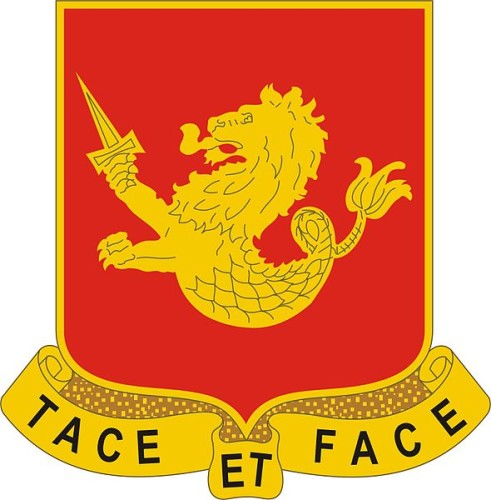
The postcards I picked up for Mom and family at the Camp Stanley PX that day read “Greetings from the Frontier of Freedom.” That seemed a little grandiose to me. If I’d understood Drill Sergeant Tajalle correctly at Fort Jackson (and he was clear and firm in his diction), my parents hadn’t succeeded in raising a boy who knew whether to deposit waste or lose his vision, who was any higher than whale leavings, or who had attained clarity on the characteristics distinguishing a young burro from a depression in the Earth. If this were really the “frontier of freedom” – if, indeed, the Second Infantry Division was considered the “first to fight” – surely they would have sent someone more qualified.
All those unit decorations would prove embarrassing when I flew home, months later, on mid-tour leave. Two things on my dress uniform were related to me, besides my nameplate: the rainbow-colored Army Service Ribbon issued for completing Advanced Individual Training (which basically meant I’d qualified for a job in the army), and my Expert rifle qualification badge. Those were on and above my left jacket pocket.
Over the right pocket rode three oversized, gold-edged ribbons: a blue Presidential Unit Citation, a red Meritorious Unit Citation, and a Korean Presidential Unit Citation in the colors of the Korean flag. I even had a green fourragére pinned to my left epaulet, awarded to the division for its World War I service and still authorized for wear by all assigned soldiers. Originally organized in France from a brigade each of soldiers and Marines, the Warrior Division was one of the most decorated and storied units in the history of our armed forces. It’s the only division in U.S. history that has variously incorporated Marines, navy sailors, Dutch soldiers, and to this very day, Korean soldiers actively assigned under U.S. command. Until I signed in, I’d known nothing about 2ID as it went about its martial business in Korea for thirty-odd years before I showed up.
There was just too much history hung on my blouse for my little head to carry. When my little sister pointed and asked, “What did you get that one for?,” I would just blush. I’d earned none of that. In every way that mattered, I was not worthy.
“It’s not really mine,” I said, scuffling my Corfam on the floor. “Did you like the jade?”
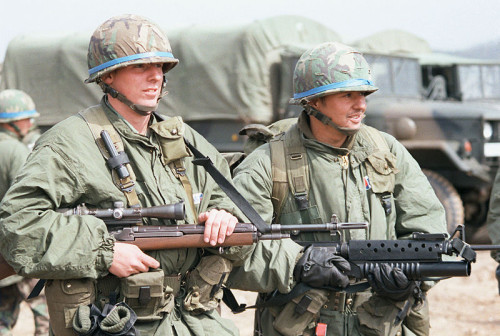 Even the big chief’s head on my left shoulder was a patch earned by others, only lately carried by me. I went on to find out some of our history – divisional, Korean; the 25th Field Artillery’s story. I even added a couple of ribbons of my own – the tiniest achievement medal issued by our army, plus my Overseas Ribbon – but I never really grasped the link between Korean nationals and U.S. forces until the day our Radar Site 7 deuce blew a tire on a paddy road with a bed full of sand for our green-bagged bulwarks.
Even the big chief’s head on my left shoulder was a patch earned by others, only lately carried by me. I went on to find out some of our history – divisional, Korean; the 25th Field Artillery’s story. I even added a couple of ribbons of my own – the tiniest achievement medal issued by our army, plus my Overseas Ribbon – but I never really grasped the link between Korean nationals and U.S. forces until the day our Radar Site 7 deuce blew a tire on a paddy road with a bed full of sand for our green-bagged bulwarks.
While we were breaking out tools and our site chief was trying (and failing) to make radio contact on the AN/PRC-77, an old man approached on his One-Eyed Dragon, AKA Paddy Rocket. These were two-wheeled drive units articulated to rear cargo carriers, with the front lugged tires driven by a low-rpm industrial engine. He chugged down the road toward us, waving furiously and smiling with all three teeth. When he got close, he bailed off and pelted toward us at a dead run, trailing a cotton shoulder bag that banged along the dirt road at his feet, still waving and also laughing and yelling and crying all at once.
Thinking he might be in serious trouble, we crowded around him, more or less blocking out the sun with a circle of six-foot Yank bodies. Our KATUSA pushed his way in to quarterback our little huddle. Choi was the only one who spoke more Korean than you would need to order a beer and supper, and get directions to the bathroom.
“What is it, Choi?,” our sergeant asked. “What does he need?”
The man dug into his bag and pulled out cans of soda and carefully wrapped food, shakily with his crabbed and stubby hands. From his hooch down the road, he had seen our breakdown and saddled up, Triple-A style, to come and help us out.
He wouldn’t stop crying. He was repeating himself. Choi just listened for a while, then he explained it to us.
“He was captured in the war. His hands – his fingers – they cut them.”
We looked down. Where he was fingering the canvas bag, his fingers ended in calloused stubs that were in every case a joint or two shy of full digit length. It turned out he was missing an ear, too. North Korean soldiers had cut bits of him off at irregular intervals, continuing until they were overrun and he was liberated by American troops.
He wouldn’t stop thanking us. Staff Sergeant Ramsey put his hands on the man’s shoulders and looked at him, not waiting for Choi to translate.
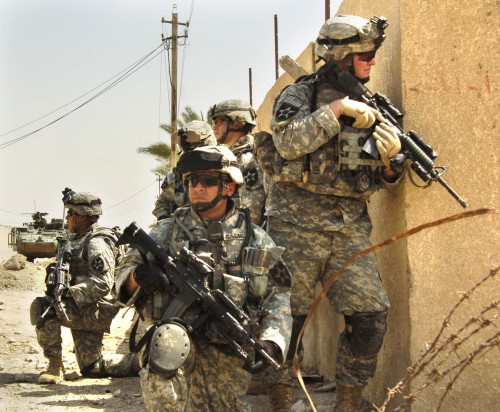 “You don’t owe us anything, ajo shee,” he said quietly. “That was a long time ago, and those were different soldiers.”
“You don’t owe us anything, ajo shee,” he said quietly. “That was a long time ago, and those were different soldiers.”
Corporal Choi frowned at him. “He knows this, Sergeant!
“For him, it is like yesterday. He cannot forget. He is always… grateful. Forever.”
The man turned in a circle to tap each of us on the left shoulder, on our Indianheads.
“He loves America,” Choi said. “He say you are the brothers – the sons – from the men who save him.”
My patch didn’t get any lighter that day. If anything, it gained weight. I would wear it again, more than 20 years later, in a different place and on a different shoulder. By then, we had shot down a civilian airliner of our own, killing 290 Iranians in an Airbus over the Persian Gulf. By then, I had a few more ribbons and a lot more life. I would be older by then, slower and stronger and hopefully wiser, and the Warrior patch wouldn’t feel heavy at all.
It felt like family then. It felt like coming home.
==============================
The following message and video was posted onto a veterans’ page by a KATUSA currently serving at Camp Stanley. Perhaps it will help to contextualize my ant’s-eye view; if we’re lucky, also to deepen your historical grasp of events on the Peninsula.
This was my comments for U.S brothers on Independence Day and the video
is dedicated to all of U.S soldiers by ROK.
——————————-
Happy Independence day to my all U.S brothers.
The Independence day of Korea is 15 Aug 1945. Even at that time during WWII, we fought against same enemy, Japan.
Actually, my history started from WWII. My grandfather was a forced labor drafted by Japan. But U.S navy gave him freedom by destroying Japanese battle ships and he stayed in Hawaii for several years helping U.S soldiers.
My father fought against enemies with U.S soldiers during Vietnam War as a ROKA soldier. And I was an infantry KATUSA of 1/503rd AASLT BTN, 2ID, 2001~2003
Three generations over 60 years have made brotherhood relationship between Korea and the U.S. I am the proof of blood-tie relationship between the two countries.
We are the unique two people from different countries but shed tears on same pictures of Korean War and Vietnam War.
I will be there whenever my U.S brothers need me and also my U.S brothers will. I and all of Koreans still remember the Korean War. We`ve never forgotten Warriors from the U.S
We believe that fallen U.S Warriors during the Korean War became Guardian Angels of Korea.
Dear my young KATUSAs. Please don’t forget that you represent Korea. You must do your best on your duty and help U.S soldiers after the duty. Although, my military service finished 10 years ago, I’m still doing PT everyday, ready to fight tonight!!
Dear my fellow U.S brothers. Please take advantage of staying in Korea. Always ask to KATUSAs for making beautiful memories in Korea. And also, I and members of KATUSA Veterans Association will always be with you. So, please do the right things.
Don’t waste your precious time in Korea. We will go to fight with you whenever you need, just like your grand fathers and fathers came to Korea for saving us during Korean War.
Thank you, my U.S brothers.
http://youtu.be/dMrJ3SvKM-8
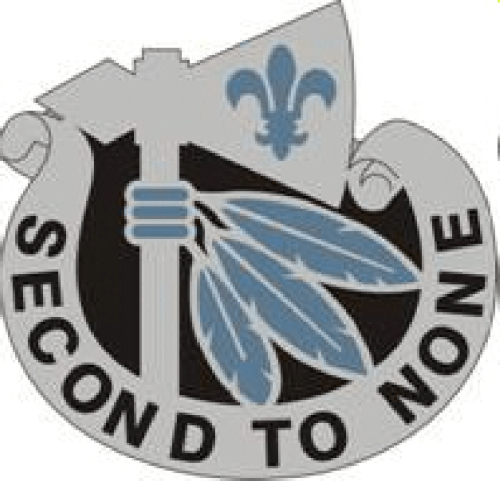

 "Jack Lewis takes the overall literary crown with his new book...there’s a lot more to Lewis’s work than what it feels like to ride motorcycles.” — Ultimate Motorcycling
"Jack Lewis takes the overall literary crown with his new book...there’s a lot more to Lewis’s work than what it feels like to ride motorcycles.” — Ultimate Motorcycling
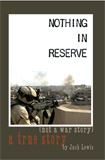 "Insightful and from the heart ... a driven and much recommended look into the mind and conflict of the next generation of war veterans. " — Midwest Book Review (Reviewer's Choice)
"Insightful and from the heart ... a driven and much recommended look into the mind and conflict of the next generation of war veterans. " — Midwest Book Review (Reviewer's Choice)
Apropos, as I’m in the midst of re-watching Band of Brothers. There exists a certain camaraderie between people who share stressful situations that overrides any artificial border. Thanks Jack
Nice work.
I was there (Camp Stanley) in 75/76. Great writing, Jack!
Thanks, boss. 😉
I was in West Germany, 1985-88. The older Germans thanked me for saving them from Communism. When we rolled out on training alerts in the middle of the night, they’d push someone forward, who had a bit of English, to ask if WWIII had started. It was eerie, because they’d stare into my eyes, trying to see if I was lying, when I told them no, it was fine. When I told them in German, it was ‘play war’ they nodded, relieved, and relaxed. The younger folk were different. They didn’t remember, they only saw the noise, the costs of having soldiers nearby in times of peace. But the older folk, they remembered, and were grateful. The young don’t remember, and the old, don’t forget.